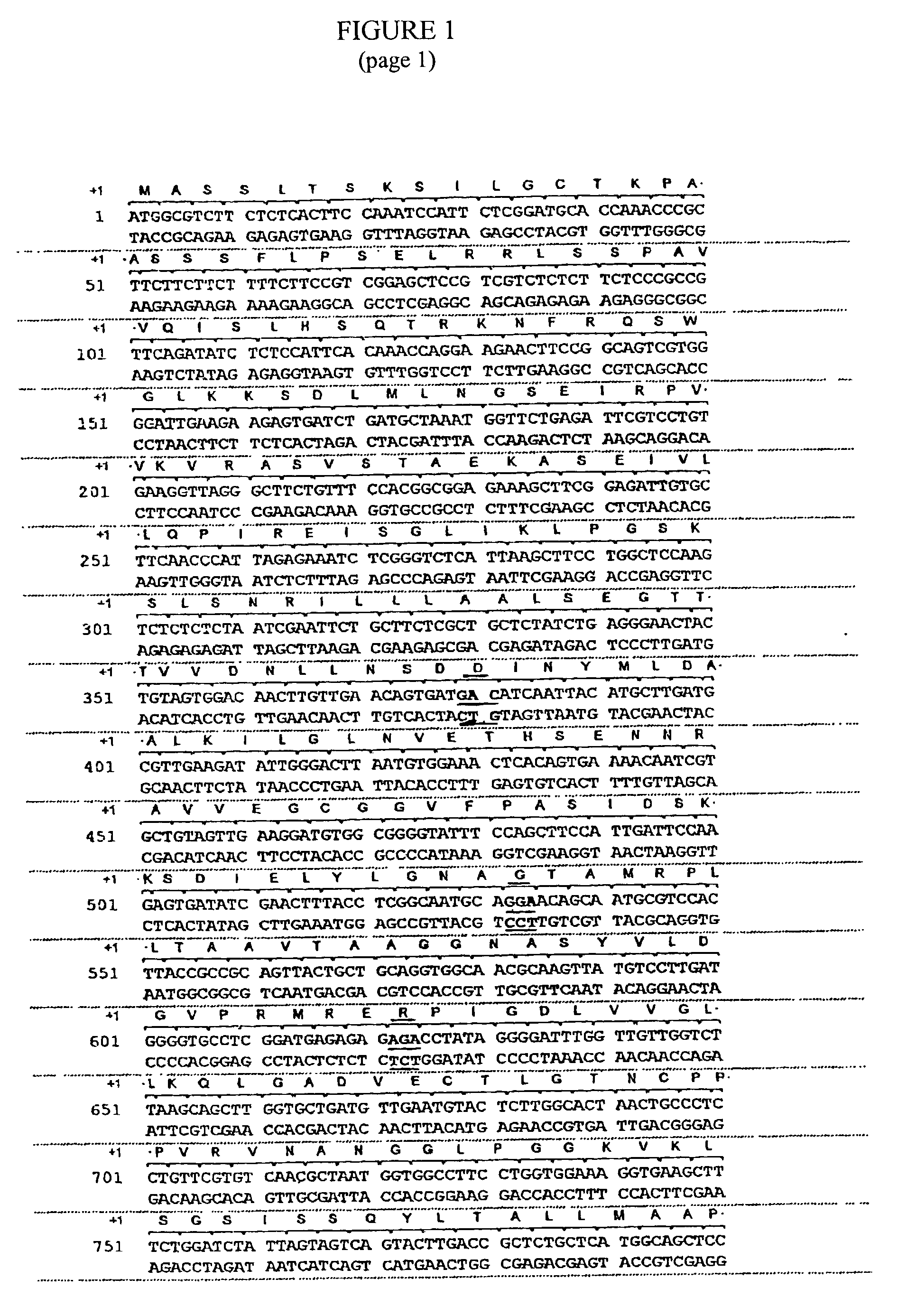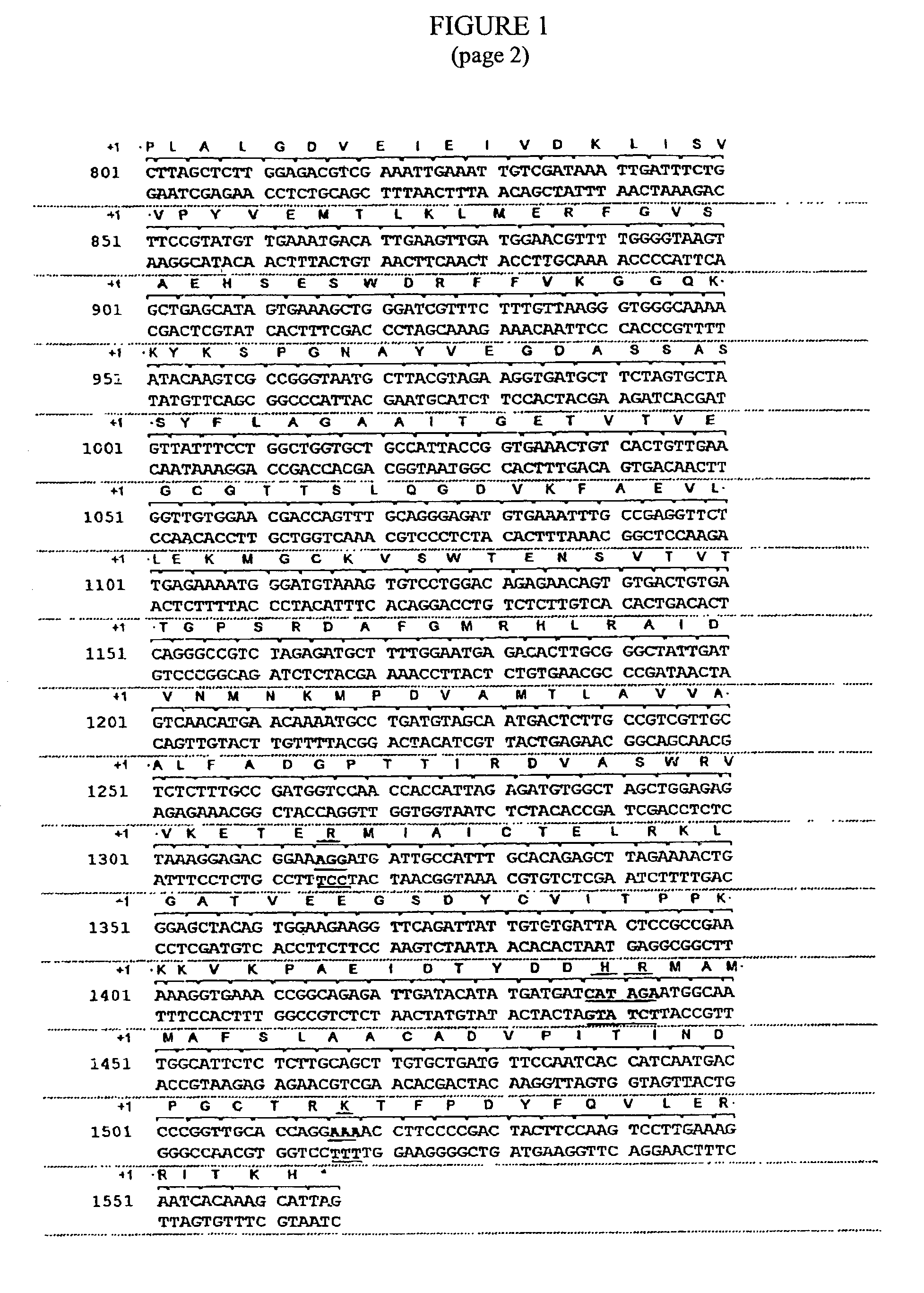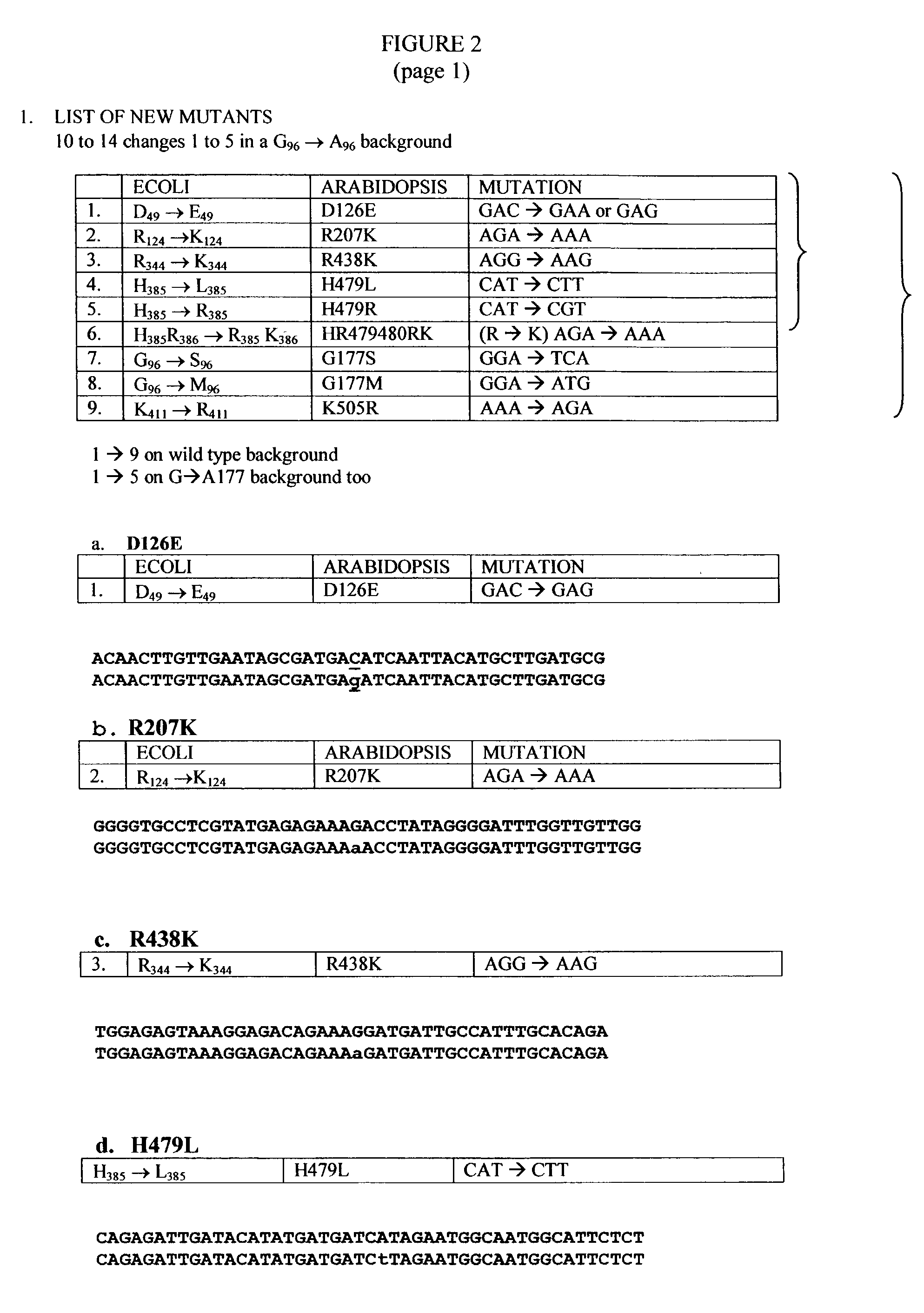Non-transgenic herbicide resistant plants
a non-transgenic, herbicide-resistant technology, applied in foreign genetic material cells, plant cells, enzymes, etc., can solve the problems of abnormally low growth and development of plants, many complications and problems, and the mutated epsps gene produces a significantly lower enzymatic activity than the wild-type epsps, so as to improve the sensitivity of progressive multiple sequence alignment and increase the cumulative alignment score
- Summary
- Abstract
- Description
- Claims
- Application Information
AI Technical Summary
Benefits of technology
Problems solved by technology
Method used
Image
Examples
example 1
6. EXAMPLE 1
Production of Glyphosate-Resistant Arabidopsis EPSPS Genes
[0116] The following experiments demonstrate the production of mutant Arabidopsis thaliana EPSPS genes which are resistant to the herbicide glyphosate and which allows the plant cells to maintain a growth rate
[0117] 6.1 Material and Methods
[0118] 6.1.1 Isolation Of Arabidopsis Thaliana EPSPS cDNA
[0119] A 1.3 kb DNA fragment was amplified by PCR from an Arabidopsis cDNA library using the primers AtEXPEXPM1 and AtEXPEXP2CM-2. The two primers were designed to amplify the cDNA from the mature peptide to the termination codon. The 5' primer AtEXPEXPM1 contains an XbaI site (underlined) and the 3' primer AtEXPEXP2CM-2 contains a BglII site (underlined), sites which will be of use for cloning of the fragment into the expression vector.
[0120] AtEXPEXPM1
1 AtEXPEXPM1 5'-GCTCTAGAGAAAGCGTCGGAGATTGTACTT-3' (SEQ ID NO:40) AtEXPEXP2CM-2 5'-GCAGATCTGAGCTCTTAGTGCTTTGT-GATTCTT (SEQ ID NO:41) TCAAGTAC-3'
[0121] The PCR band was excis...
PUM
| Property | Measurement | Unit |
|---|---|---|
| concentration | aaaaa | aaaaa |
| concentration | aaaaa | aaaaa |
| concentration | aaaaa | aaaaa |
Abstract
Description
Claims
Application Information
 Login to View More
Login to View More - R&D
- Intellectual Property
- Life Sciences
- Materials
- Tech Scout
- Unparalleled Data Quality
- Higher Quality Content
- 60% Fewer Hallucinations
Browse by: Latest US Patents, China's latest patents, Technical Efficacy Thesaurus, Application Domain, Technology Topic, Popular Technical Reports.
© 2025 PatSnap. All rights reserved.Legal|Privacy policy|Modern Slavery Act Transparency Statement|Sitemap|About US| Contact US: help@patsnap.com



